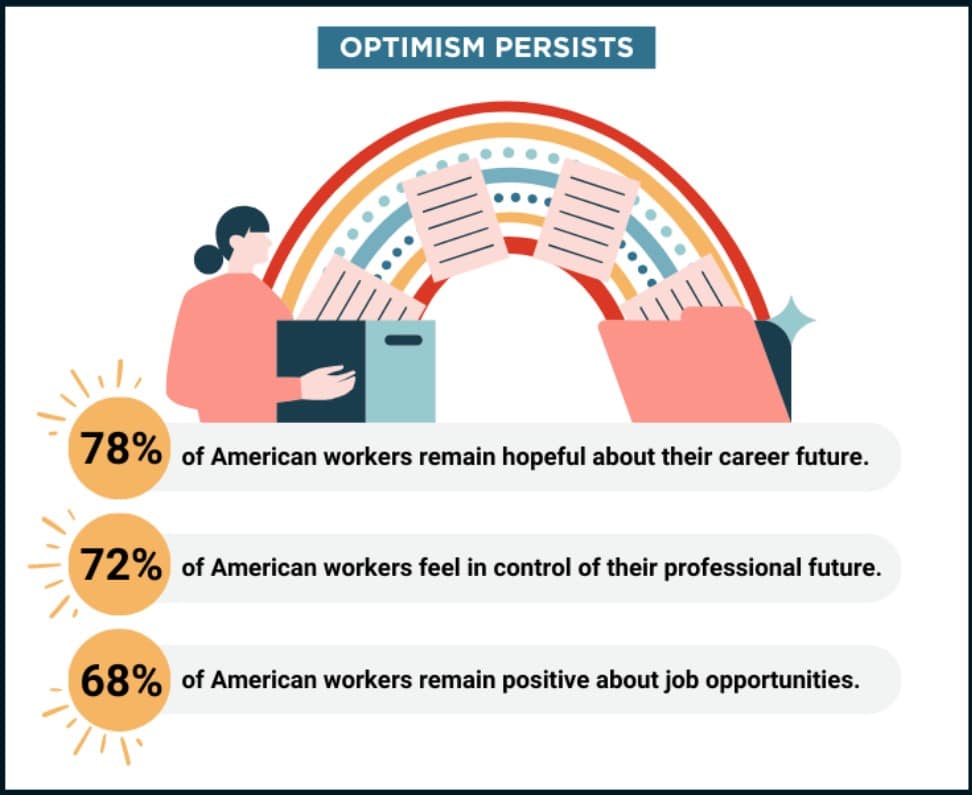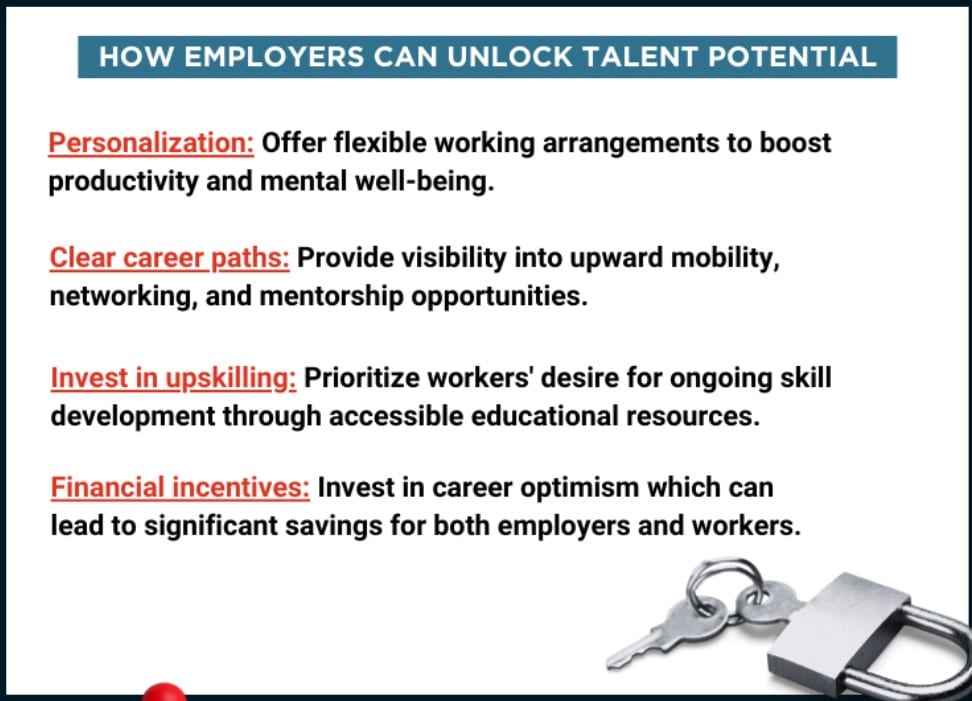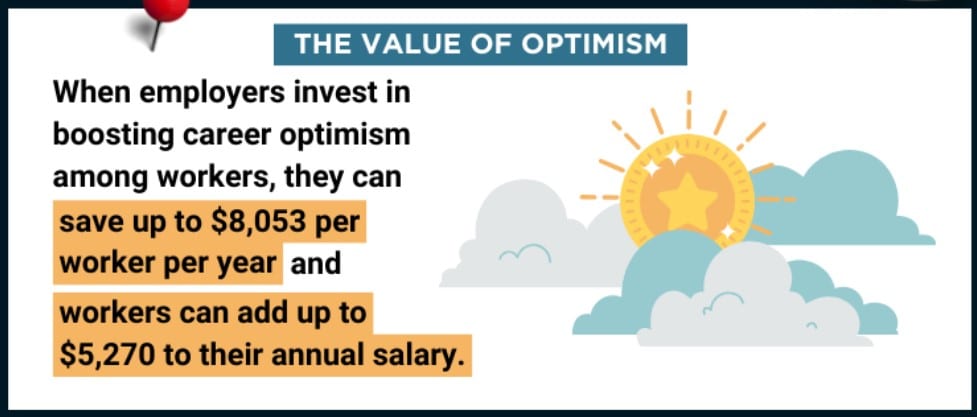They say good help is hard to find, and they aren’t kidding. Skilled talent has become as precious as gold in today’s workplace, and if you ask workers, leaders aren’t really helping much. Looming fears of job loss—whether it be AI, inflation, poor skillsets, or damaged manager/employee relationships—has many workers on edge, resulting in subpar performance. Meanwhile, leaders are reducing the number of hires and getting picky with the ones they do make, hoping for that ideal new employee.
A new research report from the University of Phoenix Career Institute—its fourth annual Career Optimism Index examining the state of American workers’ career trajectories and sentiments about the future of their job and career opportunities—reveals that workers and employers are facing a critical moment of talent stagnation in the workplace.

More than half (53 percent) of Americans report feeling easily replaceable in their job position and 64 percent of workers say their company does not offer opportunities for internal mobility. Meanwhile, 44 percent of employers say their top challenge to finding talent in the past year is a lack of well-qualified applicants. These findings indicate that employers are not looking internally and, thus, overlooking the potential to upskill and elevate their existing workforce to solve business needs, hindering talent progression for both workers and organizations.
What the workforce is saying
- The last year of layoffs, strikes, and economic uncertainty has caused tension for workers: 42 percent reportedly worry about losing their job due to a bad economy and 38 percent of workers agree that their salary or wage has not increased at the same rate as inflation. Additionally, Americans have a negative outlook on their financial security, with 42 percent saying they can afford less now than they could two years ago.
- More than half (53 percent) of Americans say they are easily replaceable—a third of workers don’t feel recognized by their company’s leadership for their contributions (30 percent) and 27 percent do not feel empowered in their current job.
- There is a wide disconnect between employer perceptions and worker realities on opportunities for advancement: While 62 percent of employers say their company currently offers opportunities for internal mobility, only 36 percent of workers agree. Additionally, 90 percent of employers say their company provides workers with opportunities for career development, but only 69 percent of workers agree this is their experience.
- However, workers do see a need to continue acquiring skills and they highly value employer investment in skilling: 74 percent say they must continuing learning new skills to stay ahead in their career and most say if their company did more to upskill (66 percent) or reskill (65 percent) them, and gave more opportunities to apply new skills (69 percent), they would be more likely to stay throughout their career.
- Yet, with a lack of career support, workers are feeling stagnant: Workers are more than twice as likely to feel like they do not have the ability to advance in their career at their current job when their company does not currently provide a mentorship program (49 percent vs. 18 percent), skills development opportunities (55 percent vs. 23 percent), internal mobility (55 percent vs. 19 percent), or career path guidelines (53 percent vs. 19 percent).
- Despite stagnation, workers continue to feel optimistic about their abilities—a belief in themselves to propel the future of their careers— which is an opportunity for employers to capitalize on that optimism: 78 percent of Americans are hopeful about the future of their career and 72 percent feel in control of their professional future.

What employers are saying
- Employers today are making fewer hires, so when they are recruiting, they are seeking the perfect match for the skills they require. However, they are struggling to find the right fit externally.
- 62 percent say their company has experienced slowed or declining hiring over the past year through hiring freezes, layoffs, restructuring, etc. Only 19 percent say their company expects to hire 51+ people over the next year (vs. 25 percent in 2023).
- 51 percent of employers report that in the past year, it took one month or more to fill an empty position at their company.
- Employers report the top challenge to finding talent in the past year was a lack of well-qualified external applicants (44 percent).
“As U.S. companies cut jobs and reduce expenses, they are fixating on the next best thing available to them outside of their organization to drive growth. This perspective is perpetuating a stagnant talent environment,” said John Woods, provost and chief academic officer at University of Phoenix, in a news release. “Our Career Optimism Index illustrates that business leaders are overlooking the immense potential of the workforce within their own organizations, who remain resilient and optimistic despite the macro environment. These workers possess a significant desire to advance and acquire the skillsets employers are seeking to fortify their businesses for the future.”

What employers can do
By providing clearer and more flexible opportunities for their existing workforce to advance internally, employers have the opportunity to develop the dynamic talent they need from within, serving business objectives and workers’ career ambitions.
- Close gaps in awareness around internal growth opportunities: While there is a vast disconnect between employer perceptions and worker realities regarding opportunities for advancement, workers who do have awareness of career support options report high levels of satisfaction with them.
- This is reflected across opportunities for internal mobility (82 percent), conversations with their manager/boss about their career path (86 percent), visibility with upper management/leadership (88 percent), networking opportunities (86 percent), and help/mentoring in their careers (87 percent).
- Create a more personalized workplace experience: Workers benefit from enhanced job performance and career advancement when their workplace experience is highly tailored to the ways they want to work and learn.
- 51 percent of Americans need support in setting career goals.
- 40 percent of Americans would prefer the flexibility of learning on their own without a course (e.g., reading a book about skills, personal projects, videos/tutorials on YouTube) when it comes to getting the skills they need for their career.
- Workers who do have the flexibility to choose what they work on at their job are more satisfied at their current job than those who don’t (86 percent vs. 66 percent).
- 78 percent of workers feel they are more productive at their job when they have more flexibility.

The value of optimism
What’s more, the addition of statistical modeling to this year’s report reveals that if employers don’t adjust to solve talent stagnation, they’ll miss out on significant business savings: up to $1.35T across businesses and organizations in the U.S.
- By investing in low-cost, high-impact tools and resources for employees to achieve their career goals including career pathing, skilling, and mentorship, employers can save up to $6,521 through increased productivity, $916 through decreased turnover, and $616 through decreased healthcare costs per employee per year.
- Workers can similarly add up to $5,270 to their annual salary by investing in their own career pathing, skilling, and mentorship.

For the fourth annual study, fielded between December 5, 2023-January 2, 2024, the University of Phoenix Career Institute surveyed more than 5,000 U.S. adults who either currently work or wish to be working on how they feel about their careers at this moment in time, including their concerns, their challenges, and the degree to which they are optimistic about their careers. The study also explores insights from 501 U.S. employers to provide comparison between the workforce and those who hire, train, and retain them. Additionally, for the first time, a statistical modeling analysis was conducted to illustrate how employers and employees can benefit financially from investing in career optimism.








